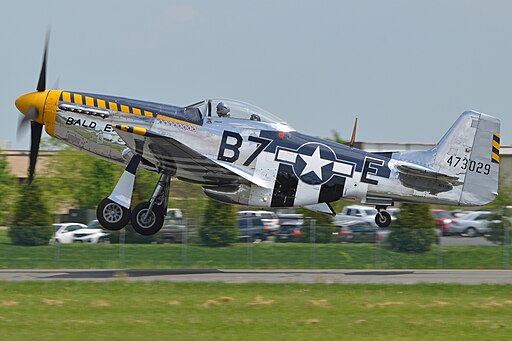In the vast horizon of aviation history, World War II stands as a monumental period, not just for its geopolitical ramifications but for the evolution of aircraft technology. From nimble fighters to lumbering bombers, the skies of the 1940s bore witness to a new breed of metal birds. Fast forward to today, and many of these iconic machines have found themselves with “For Sale” tags, whisked away from museums and private collections to be owned by enthusiasts and investors.
The Promise of Tangible History
The allure of World War II planes isn’t merely about owning a piece of machinery—it’s about possessing a tangible slice of history. For many, these aircraft aren’t just metal, rivets, and fabric; they are storytellers, silent witnesses to monumental battles and human endeavors.
Pride in Restoration: Restoring a World War II aircraft is no small feat. It’s a labor of love, demanding financial investment and hours of research, craftsmanship, and dedication. For many, the meticulous process of bringing a wartime relic back to its former glory is a journey in itself—a tactile connection to the past.
A Flight Back in Time: There’s magic in the roar of a Rolls-Royce Merlin engine or the Pratt & Whitney radial purr that transcends the mere act of flight. For pilots and passengers of these vintage birds, it’s a temporal journey—a fleeting moment where they can touch the skies just as aviators did over battlefields long ago.
An Investment with Wings
Beyond the historical allure, there’s a pragmatic facet to the burgeoning market for World War II aircraft: investment potential.
Rarity and Value: Each year, the number of surviving World War II planes dwindles. Whether lost to decay, accidents, or simply the ravages of time, these machines are becoming increasingly rare. And as with any limited commodity, rarity often begets value. Investors, recognizing the potential appreciation of well-maintained and restored aircraft, have entered the fray, seeing these planes as historical artifacts and assets.
The Experience Economy: In an age where experiences often trump physical possessions, offering rides in a genuine World War II plane can be lucrative. For aviation enthusiasts, historians, or simply those seeking the thrill of vintage flight, the opportunity to soar in a Spitfire, Mustang, or B-17 is a premium experience that they’re willing to pay handsomely for.
Preserving the Legacy
For some owners, selling is driven by an altruistic motive: ensuring preservation. While vital in safeguarding aviation history, museums can sometimes be limited by budgetary constraints or space.
Private Ownership as Stewardship: Many private owners possess the resources and passion to maintain these aircraft in flying condition. By purchasing, restoring, and occasionally showcasing these planes at airshows or events, they’re playing a pivotal role in keeping the legacy of WWII aviation alive.
The market for World War II planes is a complex tapestry woven from threads of history, economics, passion, and preservation. As Spitfires, Corsairs, and Lancasters change hands, they’re not just being traded as commodities; they’re being passed down as torchbearers of stories, ensuring that the echoes of their past reverberate well into the future. For those fortunate enough to own or even witness these planes, it’s a gentle reminder that history, when cherished and celebrated, has a unique way of soaring across generations.
For more insights into the P-51D Mustang and other important military aircraft, visit Aces In Action. Here, you’ll find an amazing piece of artwork by Craig Tinder titled “Big Beautiful Doll,” which illustrates the highly detailed and technically accurate profile of the P-51D Mustang, “Big Beautiful Doll.” The profile print even includes a piece of an embedded fragment from a P-51 Mustang mounted on a beautifully engraved metallic data plate, which outlines the details of the relic.
P-51D Mustang – Big Beautiful Doll -Framed Aviation Art – Profile by Craig Tinder


